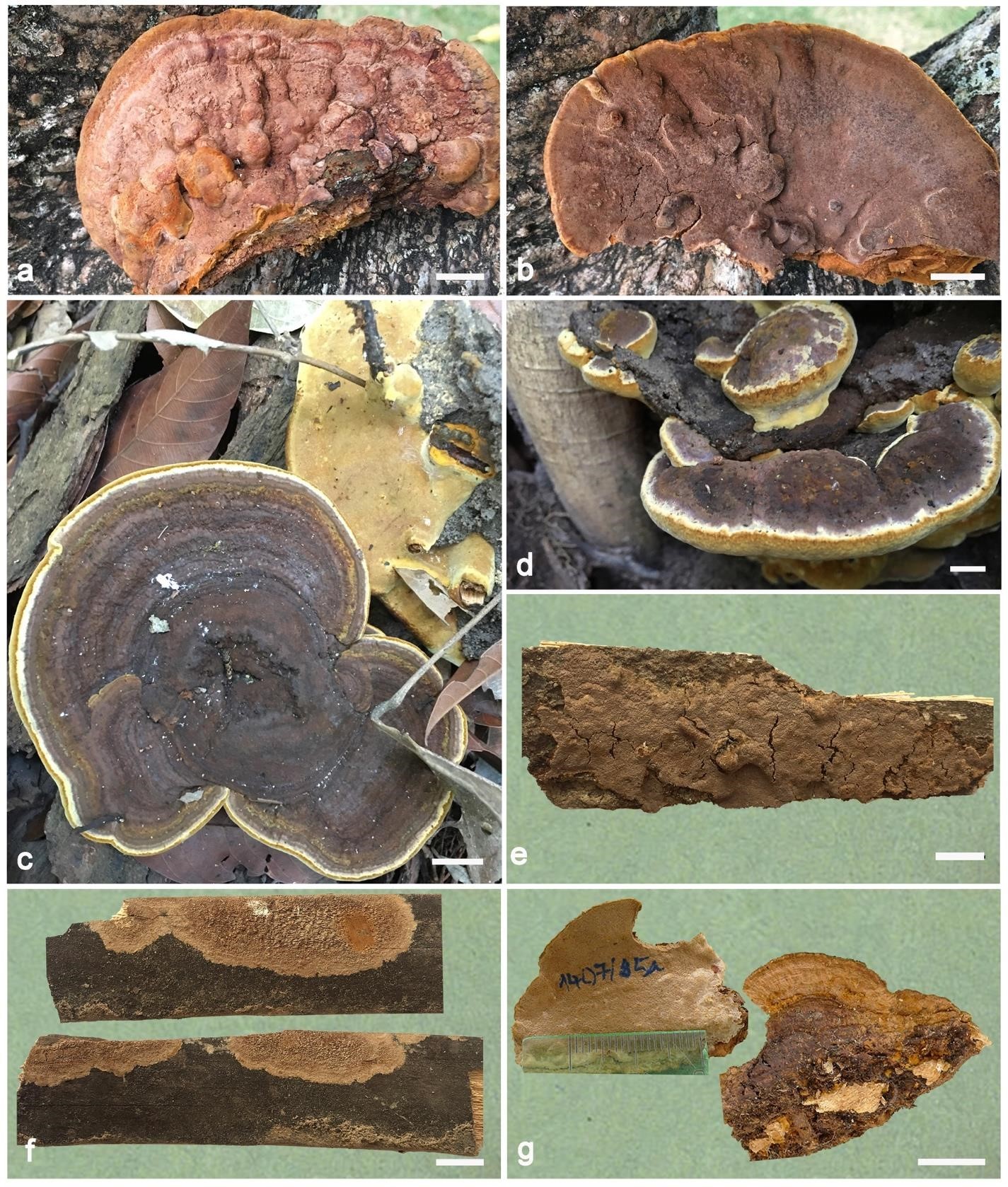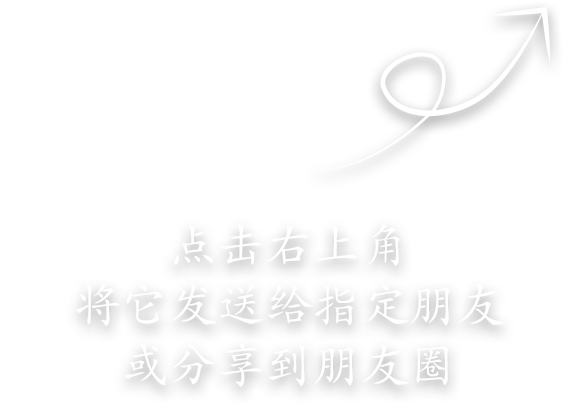Fuscoporia bambusicola (L.W. Zhou & B.S. Jia) Q. Chen, F. Wu & Y.C. Dai 2020
MycoBank MB 833968; Facesoffungi number: FoF 07993.
Holotype: China, Hainan Province, Changjiang County, Bawangling Nature
Resever, on dead bamboo, 8 Jul 2009, B.K. Cui 8692 (BJFC 007632, holotype).
Morphological description
Fuscoporia bambusicola was originally described as Phellius bambusicola from southern China based on morphology (Zhou & Jia 2010). Its holotype was studied and DNA was extracted. Our phylogenetic analysis indicated that F. bambusicola nested in Fuscoporia. It is therefore the above combinaton is proposed. Fuscoporia bambusicola is closely related to F. latispora Y.C. Dai, Q. Chen & J. Vlasák (Figs 1–2), but F. latispora has mycelial setae often in sterile margin which lead the sterile margin darker than pores surface, longer hymenial setae (55–72 μm), and a distribution in Central America (Chen et al. 2019); while F. bambusicola has mycelial setae in subiculum rather than at sterile margin, shorter hymenial setae (32–54 μm), and occurs in tropical China (Zhou & Jia 2010). Fuscoporia monticola also occurs in southern China, it resembles F. bambusicola by similar basidiocarps and presence of mycelial setae, but it has larger pores (2–3 per mm vs. 3–5 per mm in F. bambusicola) and oblong ellipsoid basidiospores (4.4–6.3 × 2.4–3.2 μm vs. 4.2–5 × 3.1–4 μm in F. bambusicola, Chen et al. 2019, Zhou & Jia 2010). Fuscoporia bambusae grows also on bamboo, but it differs from F. bambusicola by smaller pores (5–7 per mm, 3–5 per mm in F. bambusicola), In addition, both species are phylogenetically distant (Figs 1–2).
Habitat: dead bamboo.
Distribution:tropical Asia.
GenBank Accession: ITS:MN816739*;nLSU:MT032486*;TEF1:MN848813*
Notes: Fuscoporia bambusicola was originally described as Phellius bambusicola from southern China based on morphology (Zhou & Jia 2010). Its holotype was studied and DNA was extracted. Our phylogenetic analysis indicated that F. bambusicola nested in Fuscoporia. It is therefore the above combinaton is proposed. Fuscoporia bambusicola is closely related to F. latispora Y.C. Dai, Q. Chen & J. Vlasák (Figs 1–2), but F. latispora has mycelial setae often in sterile margin which lead the sterile margin darker than pores surface, longer hymenial setae (55–72μm), and a distribution in Central America (Chen et al. 2019); while F. bambusicola has mycelial setae in subiculum rather than at sterile margin, shorter hymenial setae (32–54 μm), and occurs in tropical China (Zhou & Jia 2010). Fuscoporia monticola also occurs in southern China, it resembles F. bambusicola by similar basidiocarps and presence of mycelial setae, but it has larger pores (2–3 per mm vs. 3–5 per mm in F. bambusicola) and oblong ellipsoid basidiospores (4.4–6.3 × 2.4–3.2μm vs. 4.2–5 × 3.1–4 μm in F. bambusicola, Chen et al. 2019, Zhou & Jia 2010). Fuscoporia bambusae grows also on bamboo, but it differs from F. bambusicola by smaller pores (5–7 per mm,3–5 per mm in F. bambusicola), In addition, both species are phylogenetically distant (Figs 1–2).
Reference: Chen Q, Du P, Vlasák J, et al. 2020 – Global diversity and phylogeny of Fuscoporia (Hymenochaetales, Basidiomycota). Mycosphere 11(1), 1477–1513, Doi 10.5943/mycosphere/11/1/10
Microscopic structures of Fuscoporia bambusicola (holotype, Cui 8692). a Basidiospores. b Basidia and basidioles. c Cystidioles. d Hymenial setae. e Mycelial setae. f Generative hyphae at dissepiment edge. g Hyphae from trama. h Hyphae from subiculum.









